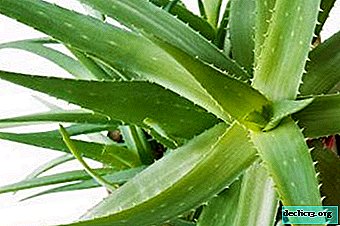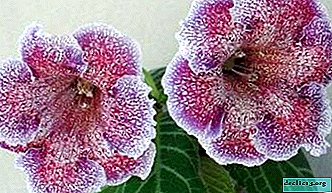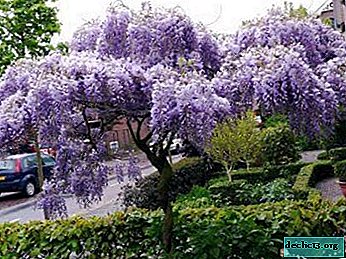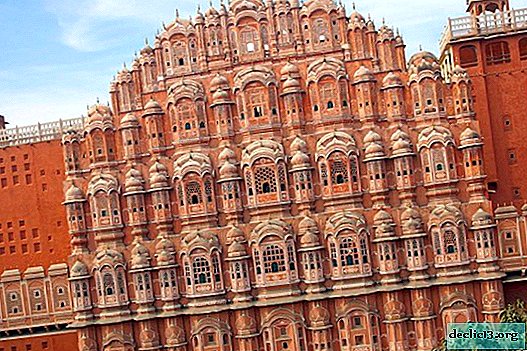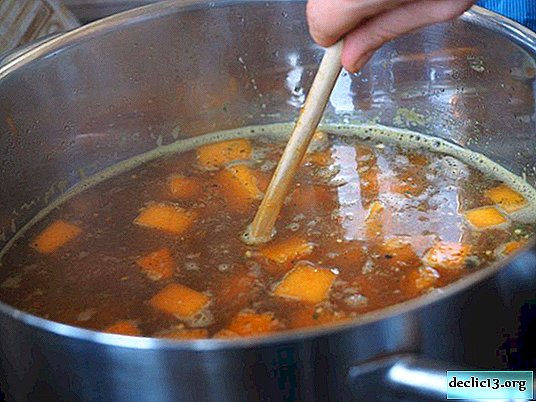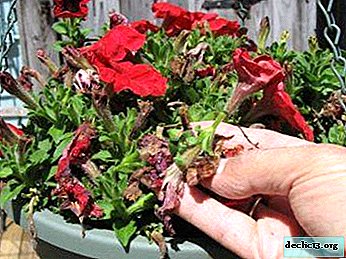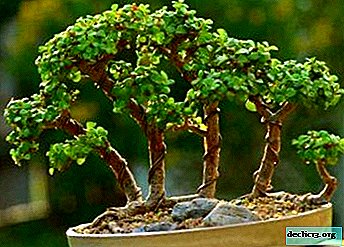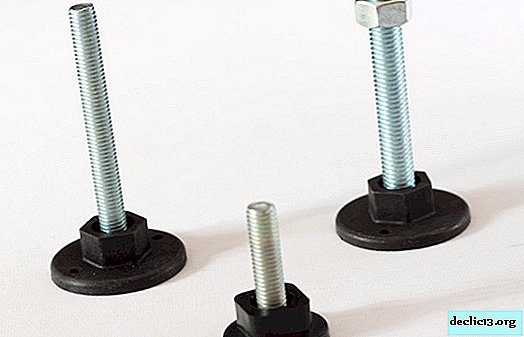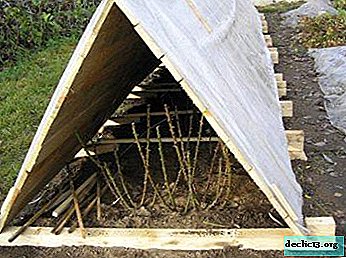Rules and recommendations from experienced gardeners: how to transplant aloe

Aloe is a succulent plant that does not like crowding. Over time, he develops an extensive root system that does not tolerate small cramped pots.
Aloe need to be transplanted on time and properly. In order for the whole procedure to go smoothly, you should adhere to the rules and recommendations from experienced gardeners. From this article you will find out when a plant needs to change the pot, how often this procedure needs to be done. As well as recommendations for further care of the flower.
Why and when is a home flower transplant needed?
- A transplant is needed in order for the aloe to be updated and take on the same decorative look.
- If many processes have formed around the central plant, it should be transplanted.
- Most often, this procedure is carried out when the old container is no longer suitable in size for its roots. By making regular transplants, the possibility of rooting out through the drainage hole is excluded.
- It is also needed if the soil is old and depleted. In poor soil, aloe begins to slow down growth, and the lower leaves gradually die. In order not to lose its decorative effect, succulent must grow in a land rich in nutrients and microelements (read about soil for aloe in this article).
- Urgent aloe needs a transplant when its roots rot. This is the only way to save it.
How often to carry out the procedure?
 This flower is characterized by rapid growth, therefore young specimens are advised to transplant annuallyuntil the plant is five years old. Adult aloe grows much slower, and it needs to be transplanted once every three years.
This flower is characterized by rapid growth, therefore young specimens are advised to transplant annuallyuntil the plant is five years old. Adult aloe grows much slower, and it needs to be transplanted once every three years.
When is the best time to carry out the procedure? How to carry it out correctly at home, taking into account the time of year, and is it possible to do this in winter? For it to succeed, it must be done on the eve or during the period of active vegetation. At the beginning of spring or summer, the plant will more actively restore the loss of the root system, more quickly get used to the new pot and get used to the fresh substrate.
Important! In autumn and winter, it is not advisable to transplant the flower at home, since during this period it is at rest and the root system is restored much more slowly. Aloe, which was transplanted in the autumn-winter season, may not cope with stress and die.Transplanting to another pot at home: instructions step by step
How to plant a flower at home, if you need to use another pot? Such a transplant should be approached carefully. First you need to choose a new container. Its size will depend on the reasons for the transplant. If this is a young plant with a powerful root system, then a large capacity will be required. Aloe, which released the daughter processes, can be left in the same pot, but provided that all the shoots are removed. Also, in the same flowerpot or even slightly smaller, a plant is left that undergoes a rejuvenation procedure.
All pots must have drainage holes at the bottom. Aloe does not tolerate when the soil is soured. Old ones should be washed and disinfected before further use.
The most important thing in transplanting is to minimize the stress factor. The composition of the new substrate should be as close as possible to the previous one. High-quality drainage is needed, and the earth is loose. Sand is added to the mixture of sheet and turf soil. If the mixture will be purchased in the store, then you need to choose for cacti or succulents.
For the procedure to succeed, aloe must be prepared. A few days before transplanting, the plant is well watered. This is done to easily extract the flower from the pot.
Step-by-step instruction:
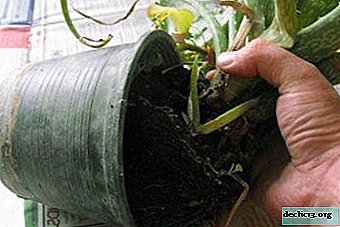 Since the plant has fragile leaves, it is necessary to minimize the loss of green aloe.
Since the plant has fragile leaves, it is necessary to minimize the loss of green aloe.- The succulent is held with one hand at the base, and the other holds a flowerpot. Then the container is turned over and the root system is taken out of it together with a lump of earth. After, the plant is laid to the surface, and the roots are freed from the soil.
- The roots are carefully inspected. Dry, old, rotten roots need to be removed.
- In a new pot you need to lay a drainage layer of gravel, and cover it with sand from above. Next, the soil is poured onto which aloe roots are placed. The plant should be centered in the center of the pot.
- The substrate should not get into leaf outlets.
- At the end of the procedure, the soil is slightly compacted, and the leaves are wiped with a damp sponge.
- Watering is carried out not earlier than in a day.
Do you recognize from the video? how to transplant aloe:
In the case where the process without root
- A process is cut off near the root, which must be put in the refrigerator for 6-7 hours.On a note. In the cold, a succulent quickly forms a crust at the cutting site.
- After the formation of a crust, you can plant.
- The soil needed is exactly the same as in the pot with the main plant. If the earth is different, then the shoot will not take root.
- A large pot is not needed. The approximate size should be with a small mayonnaise bucket. Capacity is best suited ceramic.
- After planting, the topsoil is a little compacted and watered.
- When the soil dries, a layer of dry earth lies on top.
- Aloe does not like the direct rays of the sun, so it is placed on the windowsill, whose windows face west or east.
In open ground
When can I safely transplant aloe into the open ground? The procedure is allowed only in the summer in warm regions. If spring does not bring surprises and the temperature does not drop below +23, then the landing can be done already at the end of May.
To plant aloe in open ground, you need to know the following:
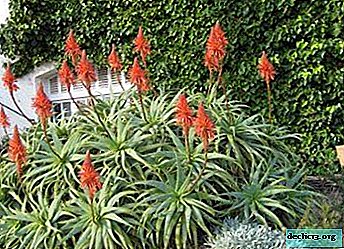 The place where the flower will grow should be lit, but without constant direct rays.
The place where the flower will grow should be lit, but without constant direct rays.- It is necessary to make sure that the plant is not wet on rainy days, otherwise it can rot.
- After the place is picked up, you need to dig a hole a little larger than the pot in which the aloe is located.
- Then you need to fill in the bottom of wood sawdust or coal, on top of a small layer of expanded clay and the finished earthen mixture.
- Further, the plant is placed in this pit and covered with the same soil mixture.
- In open ground, scarlet does not need top dressing, and watering is done only when the earth is completely dry.
Care
How to care for the plant immediately after transplantation? Since the plant has a non-standard leaf shape that retains moisture well, a place under the flower will be bright. In the summer, the pot can be taken out to the balcony.
Important! Watering is not carried out often. If the soil is excessively moistened, aloe can wither and die (how to water aloe properly, read here).In cold weather it will be enough to water once a month. In the summer it is worth doing this more often, but not earlier than when the topsoil dries. Aloe does not need frequent feeding. Starting in April and ending in October, the plant is fed once a month with liquid combined fertilizers. If the transplant was performed correctly, then feeding is not necessary (about how you can feed aloe at home, learn from this article).
Read more about aloe care here.
What to do if the plant does not take root?
To understand what needs to be done if the plant does not take root, it is worth finding out the reason. There may be several reasons: unsuitable substrate, poor planting material, improper care.
- If it turns out that for aloe soil does not fit, then it needs to be replaced immediately. It is necessary to make the correct composition of the soil, adhering to all the recommendations and advice from flower growers or to buy already prepared land for succulents.
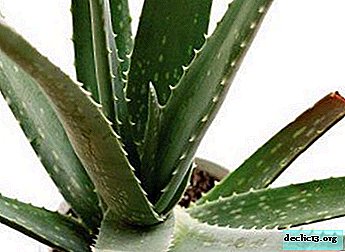 Poor planting material says that the stalk was taken from a diseased plant or was itself damaged. The likelihood that he will successfully take root is extremely small. Therefore, you have to re-carry out the transplant procedure.
Poor planting material says that the stalk was taken from a diseased plant or was itself damaged. The likelihood that he will successfully take root is extremely small. Therefore, you have to re-carry out the transplant procedure.- Improper aloe care. You must be extremely careful and clearly follow the recommendations of experienced gardeners. If the owner of the plant noticed that the flower does not take root, it is first necessary to reconsider the care for it and understand what is being done wrong. Having ascertained the cause, eliminate it immediately.
Conclusion
Aloe is a fairly unpretentious plant. With him there will never be problems if proper care is taken for the flower. It is especially important to carry out the correct transplant, its longevity will depend on this.

 Since the plant has fragile leaves, it is necessary to minimize the loss of green aloe.
Since the plant has fragile leaves, it is necessary to minimize the loss of green aloe. The place where the flower will grow should be lit, but without constant direct rays.
The place where the flower will grow should be lit, but without constant direct rays. Poor planting material says that the stalk was taken from a diseased plant or was itself damaged. The likelihood that he will successfully take root is extremely small. Therefore, you have to re-carry out the transplant procedure.
Poor planting material says that the stalk was taken from a diseased plant or was itself damaged. The likelihood that he will successfully take root is extremely small. Therefore, you have to re-carry out the transplant procedure.
